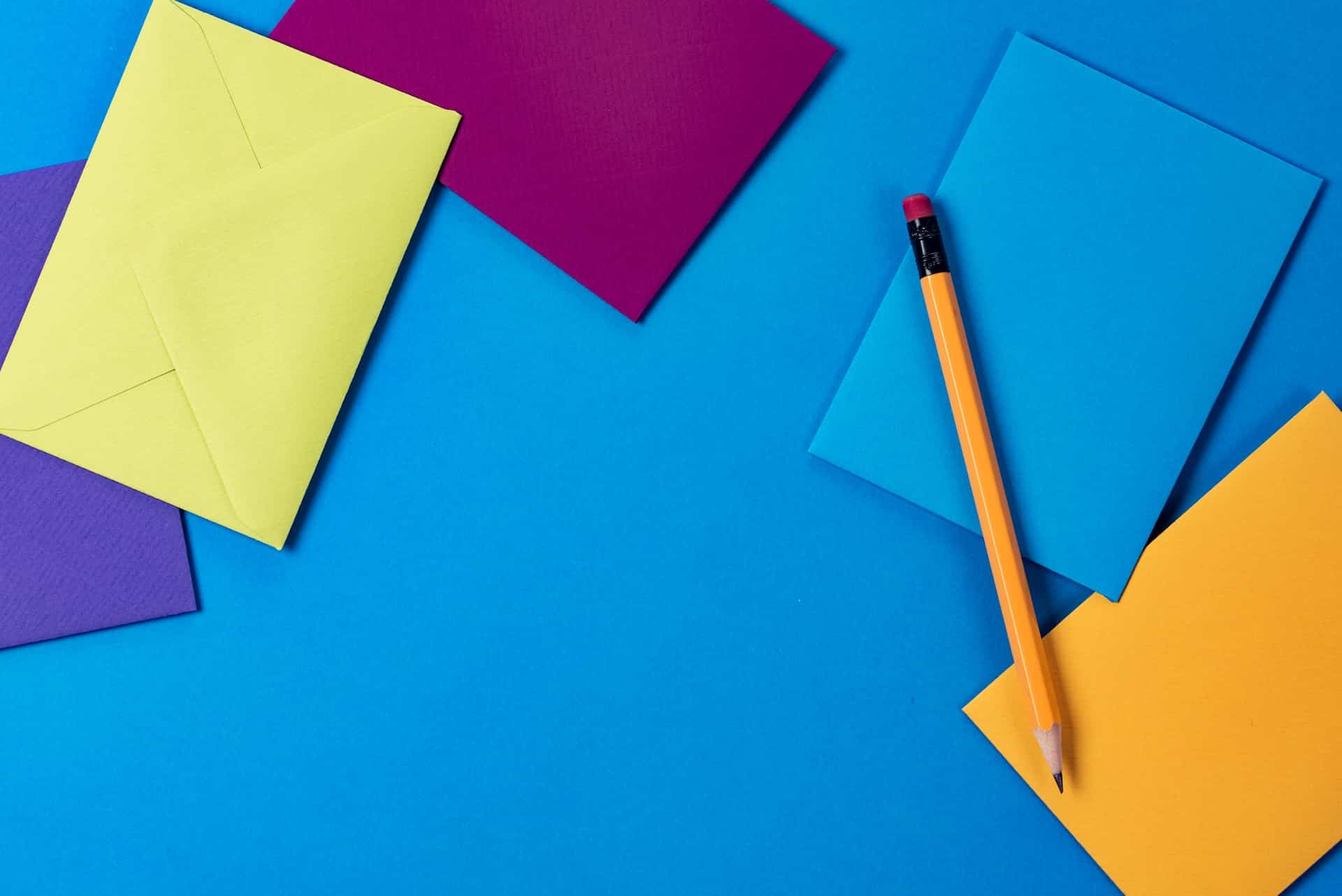Cash stuffing is a way to organize one’s budget, similar to the envelope system, where consumers put money for recurring expenses and other finance goals into individual envelopes. Then, when it’s time to pay that bill, balance, etc., the consumer uses funds from the corresponding expense envelope. The purpose of the cash stuffing budgeting method is to limit vicarious spending and get a visual representation of how someone spends their income.
With inflation and rising prices affecting almost every aspect of American life, from home buying to grocery shopping, it’s no wonder why people are looking for new ways to make the most of their income. Instead of relying on sketchy forms of funding, like quick cash loans, when you need extra money, you may find that simply creating and keeping an organized budget is enough to hone in your spending and make recurring expenses seem more affordable.
Here you will learn about the TikTok money trend known as “cash stuffing,” how it works, how you can start using it today, and what your other budgeting options are!
The Cash Stuffing System: TikTok’s “New” Budgeting Hack
Currently, the hashtag “#cashstuffing” has about 1.3 billion views on TikTok, with related hashtags like “#cashstuffingchallenge” and “#cashstuffingsystem” having millions of views as well. However, while stuffing cash may be a new budgeting system for many Gen Z social media users, it may sound familiar to other people who have used the envelope budgeting system before. Cash stuffing is essentially a rebranded form of the envelope system.
How Does Cash Stuffing Work?
What is cash stuffing and how does it work? To utilize the cash-stuffing budgeting method, you can follow these simple step-by-step instructions!
- Get an envelope for each of your financial responsibilities/expenses involved in your budget. These envelopes will be your various spending categories (see a more detailed list of categories below).
- After calculating how much each category requires every month, withdraw the appropriate amount from your bank account and put the physical cash in each corresponding envelope.
- When it’s time to make payments, you may either pay in person or send your creditors cash. You can also deposit the funds back into your checking account and submit digital payments immediately after.
What To Include When Starting To Cash Stuff (Bills, Credit Card Debt, Etc.)
Ready to start cash stuffing? Before you calculate how much cash you need to put towards your expenses, you must first identify what those expenses are. To calculate your budget, simply take all of your financial obligations and organize them into spending categories. From there, look at your past payments to determine how much you typically contribute towards each spending category on either a weekly or monthly basis.
Below are some common expenses you will want to create spending categories for:
- Living Costs – Your living costs will include your basic cost of housing, which for most people will either be a rent or mortgage payment. Remember to also consider insurance (renters or homeowner’s insurance) costs when calculating how much you will contribute towards this category.
- Recurring Bills – Consider the bills you are responsible for to keep your household running. Utility bills (water, electricity, heating, cooling, trash pickup, etc.), cell phone bills, and household entertainment bills (cable, internet, subscription services, etc.) are the most common types of expenses that fall into this category. Depending on the different types of bills you pay, it may be a good idea to have an individual envelope for each recurring bill.
- Outstanding Balances – Outstanding balances would include expenses like your current credit card balance and other loans you are currently paying off. Staying on top of repaying your debts, like credit card debt, is essential, and will contribute to your payment history. Since payment history is the most influential factor that contributes to credit scores, making your payments on time should be a top priority.
- Groceries – Determining how much cash you will need to contribute towards this category will depend on your eating habits. If you order takeout often, now might be a good time to start cooking at home and eating leftovers to save money. Did you know that in 2022 American’s spent over $1.05 trillion on “food-at-home” spending?1
- Transportation Costs / Car Insurance – If you have a vehicle (whether you own it outright or are still making payments), you must consider costs like insurance, gas, and potential maintenance.
- Pet Expenses, Childcare / School Costs – This spending category will depend on if you have any pets or children. Consider expenses like visits to the doctor or vet, the cost of daycare, school, or boarding, and other general expenses your children or pets may require.
- Clothing / Personal Upkeep – Although we don’t purchase new clothing, get a haircut, or visit the dentist every day, it’s still important to consider these kinds of expenses when budgeting.
- Variable Expenses / Savings Goal – It’s also important to prepare for the unexpected and set goals for the future. For this category, consider variable expenses like annual subscriptions, financial emergencies, or even saving money during the holidays.
If you are having a slow month where not a lot of funding is required for this category, you can set savings goals and contribute cash towards potentially fun experiences like taking a vacation or making a large purchase.
Suggested Monthly Cash Stuffing Breakdown
| Spending Category | Percentage of Monthly Income | Description |
| Housing | 30% | Rent/mortgage, insurance |
| Utilities | 10% | Water, electricity, heating, internet |
| Food & Groceries | 15% | Daily meals, dining out |
| Transportation | 10% | Gas, public transportation, maintenance |
| Savings | 10% | Emergency fund, future goals |
| Entertainment | 5% | Movies, subscriptions, hobbies |
| Healthcare | 5% | Medications, doctor visits |
| Debt Repayment | 10% | Credit Card bills, loans |
| Miscellaneous | 5% | Unexpected expenses, gifts |
Who Will Benefit the Most From the Cash Stuffing System?
Often, early adulthood is a time when consumers are getting the hang of handling their own finances. Using the cash stuffing method can be a great way for young adults new to financing to learn how to effectively and responsibly handle their income. While cash stuffing is currently more common with Gen Z and other young adults, it can be utilized by just about anybody!
Pros and Cons of the Cash Stuffing Method
Before you commit to the cash-stuffing budgeting method, consider the pros and cons. That way, you can decide if this way of organizing your finances will work well for you. Although it may be a bit time-consuming at first, you may find that the benefits heavily outweigh any potential cons when it comes to cash stuffing.
PRO: Visualize Where Your Income Is Going and Be More Mindful About How You Spend Money
The cash-stuffing budgeting method allows people to visualize exactly where their income is going and how they are spending money. Making purchases electronically or with credit can start to become passive after a while. When all you have to do is click a few times to buy something, the rush of positive feelings that come from getting something new can blind us from noticing how much money, exactly, we are spending.
By putting hard cash into individual envelopes that represent your bills and other recurring expenses, you are able to physically see how you are spending your money. Furthermore, by taking cash out of your bank account and stuffing it into envelopes, you are effectively lowering the amount of money you have to use for electronic purchases/payments with your debit card. Having less money in your bank account can act as a deterrent when it comes to impulse spending and can help you eliminate mindless online shopping.
PRO: May Help You Stay On Top of Payments and Reduce Debt Stress
When all of your payments are digital, it can be difficult to remember when your various due dates are and how much you are required to pay. With cash stuffing, you know exactly how much money you need to take care of your expenses, and it may also lower your chances of having to deal with added financial stress like insufficient funds fees.
CON: No Money if Envelopes Are Lost or Destroyed
While physical cash can help you visualize your budget, it may also be irreplaceable if lost or damaged. For example, say you emptied your bank account to store cash and fell victim to a fire or natural disaster that caused damage to your home. In this situation, you run the risk of your cash/budget getting destroyed. At that point, recovering your lost budget may depend on what kind of insurance coverage you have. If your coverage does not include fires, floods, or whatever caused damage to your home/cash, you may just have to cut your losses and start your budget over.
CON: You May Miss Out on Virtual Perks
Usually, savings and checking accounts reward users with interest payments on a recurring basis. The more money you have in your accounts, the higher the interest payment you will receive. But if you consistently have low bank account balances because you are withdrawing cash to stuff into envelopes, you may miss out on these higher interest payments. While these contributions aren’t usually very much (typically just a few dollars or less), it is essentially free money you are missing out on.
Other Ways To Organize Your Budget Instead of Cash Stuffing
The cash stuffing budgeting method isn’t the only way to effectively organize your finances and save money. Below are some other common budgeting techniques you may find useful.
- Try Zero-sum Budgeting: Another way to budget money is the zero sum budgeting method, also known as reverse budgeting. Under this method, you would take your paycheck and designate every dollar towards a specific spending category until you reach zero. For example, say your paychecks are normally $1,000. In this case, you would divide up that $1,000 over various budgeting spending categories (living costs, groceries, utilities, savings goals, etc.). That way, you know there is no wasted income from your paycheck.
- Work on Building Your Savings Account: It’s also important to establish a savings account or emergency fund. When unexpected expenses pop up, you can then rely on your savings instead of having to turn to potentially predatory loan products like payday loans or car title loans.
- Try Budgeting Apps: In lieu of using physical envelopes to organize your budget, you can also do the same thing electronically through budgeting apps. However, keep in mind that many budgeting mobile apps are not free and may have requirements like allowing third-party checking account access.
- Consider Using Autopay: You can also take the stress out of remembering to make manual payments by signing up for autopay. With autopay, funds are taken directly from your checking account to go toward various bills on their designated due date. You can also typically pick the day when automatic payments occur, so you can schedule everything to happen on the same day or over the course of the month, depending on your budget and pay schedule.
What is Cash Stuffing FAQs
Using physical money allows for a tangible representation of your finances, making it easier to visualize and control where your money is going, unlike digital tools where one might lose track.
A cash stuffing binder is a more organized and compact way to categorize and store your money for different expenses. While the envelope method uses individual envelopes for each category, the binder consolidates these into one place with separate sections or pouches for each category.
Cash stuffing provides a clear visual of how much money you have allocated for each category, making you more conscious of your spending habits and helping you avoid overspending.
No, you don’t need multiple bank accounts. You can withdraw the required amount from your primary account and then distribute the money into your cash stuffing binder or envelopes based on your budget.
Spending limits are determined based on your monthly spending habits, personal finance goals, and overall income. It’s essential to review past expenses, like credit card debt, and set realistic limits to ensure you cover all necessities.
By giving you a clear picture of where your money is going and helping you set spending limits, cash stuffing can make it easier to save, invest, and allocate funds towards specific financial goals.
No, the money in your binder for cash stuffing won’t earn interest like it would in a savings account. If earning interest is a priority, you might consider keeping a portion of your savings in the bank.
Review your binder for cash stuffing and see if there are categories where you can reduce spending for the month. It’s also a good practice to have an emergency section in your binder for unforeseen expenses.
While the tangible nature of the method helps many stay on track, if you don’t regularly review and adjust your allocations, you might lose track. It’s essential to stay proactive and revisit your binder or envelopes regularly.
The envelope method, like cash stuffing, offers a visual and tangible approach to budgeting. While other strategies might focus on digital tracking or investment growth, the envelope method emphasizes controlling daily and monthly spending to achieve spending goals, like reducing credit card debt.
CreditNinja’s Thoughts on Cash Stuffing
CreditNinja knows that keeping your budget organized is essential if you want to achieve financial stability or reach the financial goals you set for yourself. That’s why we work hard to provide consumers with all the information they need in order to make smart financial decisions for themselves. Looking for more helpful resources on online loans, budgeting, and handling your finances? The CreditNinja blog dojo is filled with tons of free resources you can access 24/7!
References:
1. Food Prices and Spending | USDA ERS
2. Zero-Based Budgeting: How Does It Work? | Capital One
Sarah is a Digital Content Writer for CreditNinja with more than 8 years experience in writing about financial current events, a wide variety of lending products, credit scores, and more. Sarah is dedicated to informing inquiring readers about core financial topics. Currently, Sarah is a participant in the American Bankers Association® Frontline Compliance program and has certificates in over 20 courses. Sarah received her bachelor’s degree as an English major with a concentration in Creative Writing. She enjoys writing about finance education, spending time with her dog and cat, and reading in her spare time. Areas of Focus: Personal Finance Education, Financial Literacy, Editing, Copywriting, Epic Fantasy Books






